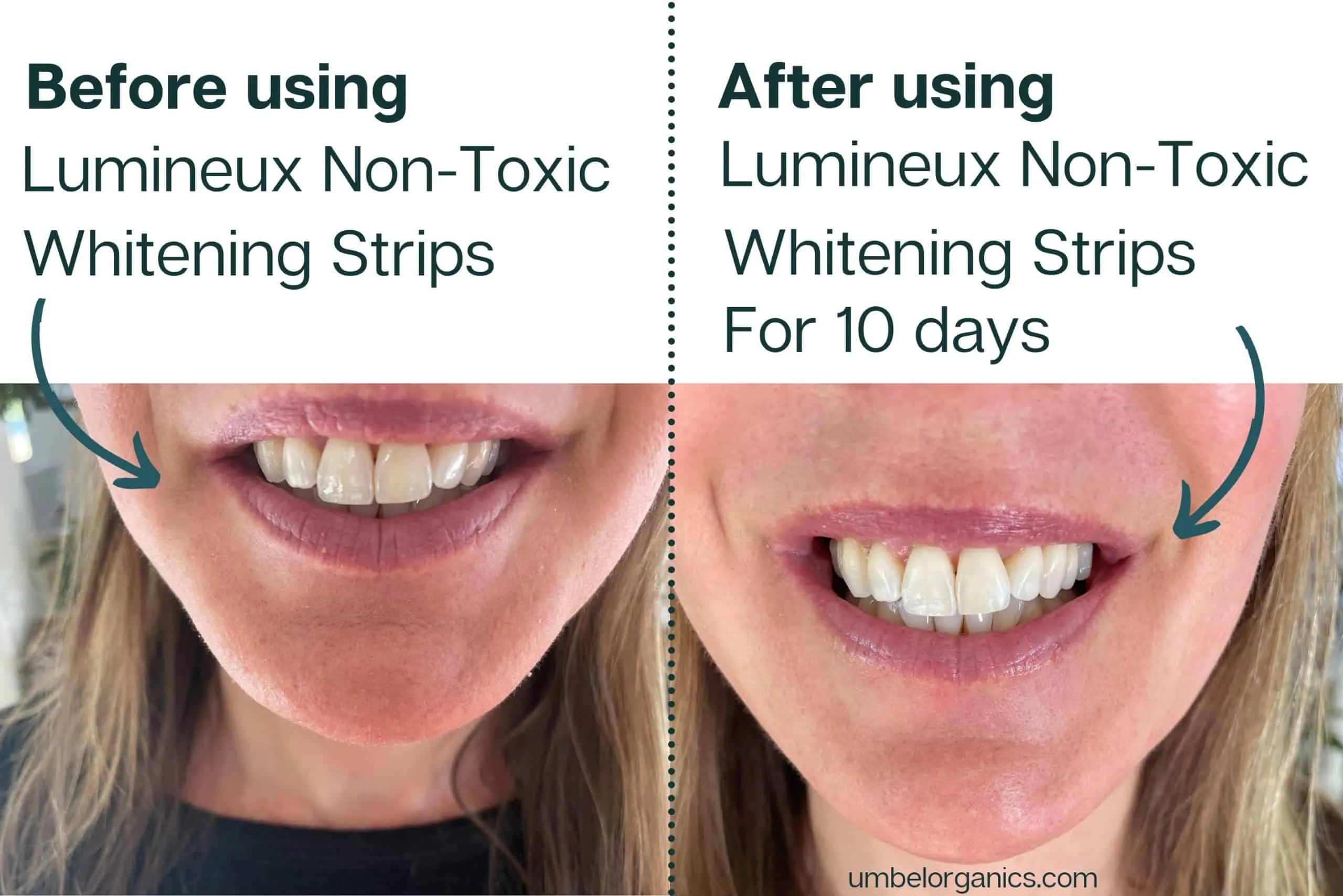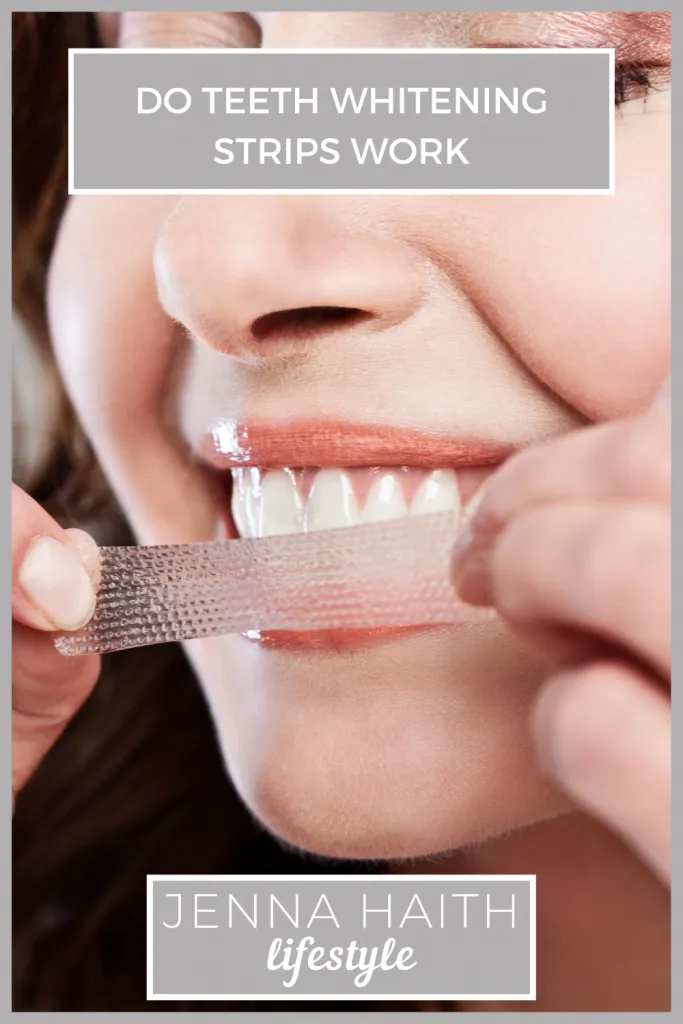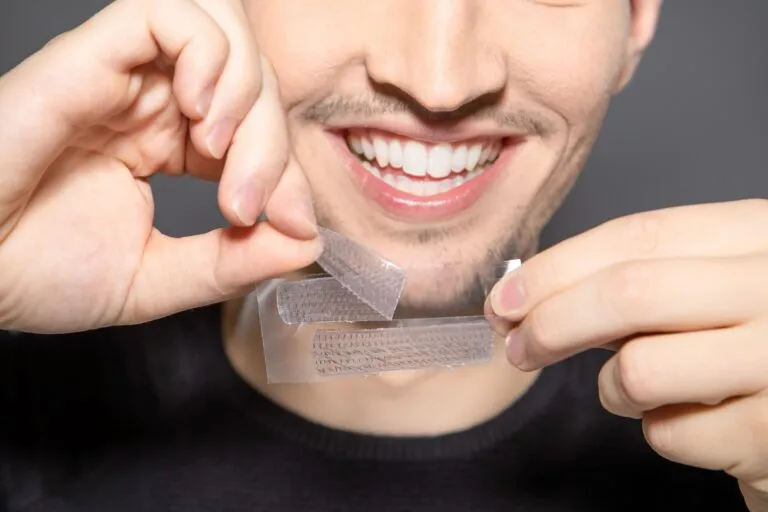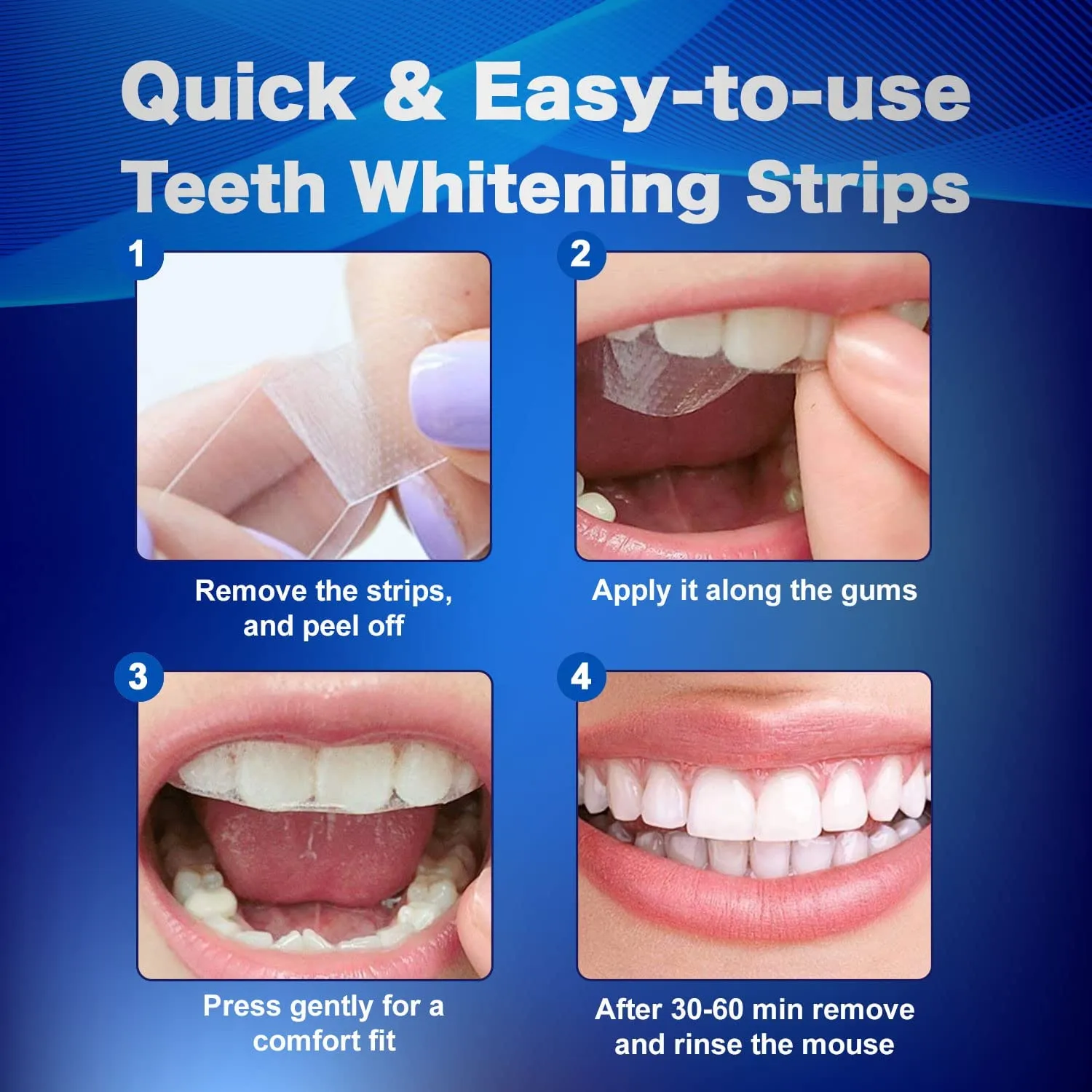Whitening Strips Daily Use Safe? Introduction
Achieving a brighter smile is a common goal, and whitening strips have become a popular, accessible solution. However, with the convenience of daily use comes the crucial question: are whitening strips safe for everyday application? This article dives deep into the science behind whitening strips, examining their ingredients, potential side effects, and long-term implications. Understanding these factors is key to making informed decisions about your oral health and achieving a dazzling smile safely. We’ll explore the pros and cons, helping you navigate the world of teeth whitening with confidence and knowledge.
Understanding Whitening Strips
Whitening strips are thin, flexible plastic strips coated with a whitening agent, typically hydrogen peroxide or carbamide peroxide. They are designed to be applied directly to the teeth, adhering to the surface and delivering the bleaching agent. The popularity of these strips stems from their ease of use, affordability, and accessibility. Unlike professional whitening treatments, whitening strips can be used at home without the need for a dentist’s supervision. This convenience has made them a staple in many oral hygiene routines, but it also raises concerns about the frequency and safety of their use.
How Whitening Strips Work

Whitening strips work by utilizing a chemical process to break down stains and discolorations on the tooth’s surface. The active ingredients, most commonly peroxide-based compounds, penetrate the enamel to oxidize the stain molecules. This oxidation process lightens the color of the teeth. The effectiveness of whitening strips depends on the concentration of the active ingredient, the duration of application, and the individual’s tooth structure and the type of stains present. Consistent use, as directed, can lead to a noticeable improvement in tooth brightness, but overuse can lead to various side effects.
Ingredients in Whitening Strips
The primary active ingredient in most whitening strips is a peroxide-based compound. These compounds are responsible for the bleaching action that lightens the teeth. The other ingredients in whitening strips play supporting roles, such as helping the strip adhere to the teeth, flavoring the product, and sometimes preventing sensitivity. The concentration of these ingredients can vary between products, and this variation can significantly affect both the efficacy and the safety of the strips.
Hydrogen Peroxide
Hydrogen peroxide is the most common active ingredient in whitening strips. It works as an oxidizing agent, breaking down stain molecules. The concentration of hydrogen peroxide in at-home whitening strips is typically lower than that used in professional treatments, which reduces the risk of severe side effects. However, the concentration, combined with the frequency of use, still affects the safety profile of these products. Strips with higher concentrations of hydrogen peroxide often yield quicker results, but they are also more likely to cause sensitivity and other adverse effects.
Other Active Ingredients

Some whitening strips may use carbamide peroxide as an alternative. Carbamide peroxide breaks down into hydrogen peroxide, providing the same bleaching effect but potentially with a slightly slower release. Other ingredients can include flavorings like peppermint or sweeteners to improve the taste, and binding agents to help the strips adhere to the teeth. Some strips may also include ingredients designed to reduce sensitivity, such as potassium nitrate. The combination of ingredients is carefully formulated to balance effectiveness and safety.
Top 5 Facts About Daily Whitening Strips Use
Understanding the potential risks and benefits of daily whitening strip use is essential for maintaining good oral health. Here are five critical facts to consider before incorporating whitening strips into your daily routine. These facts will help you make informed decisions about your teeth-whitening practices and protect your dental health from potential harm.
Fact 1 Sensitivity Issues
One of the most common side effects of using whitening strips, especially daily, is increased tooth sensitivity. The peroxide in the strips can penetrate the enamel and reach the dentin, where the nerves are located. This can cause temporary discomfort when consuming hot or cold foods and drinks. Daily use can exacerbate this issue, as the enamel does not have adequate time to recover between treatments. If you experience significant sensitivity, it’s best to reduce the frequency of use or consult with a dentist.
Managing Tooth Sensitivity

To manage tooth sensitivity, consider using toothpaste designed for sensitive teeth, which contains ingredients like potassium nitrate to block the nerve signals. Apply the whitening strips less frequently, or for a shorter duration. Rinse your mouth with lukewarm water after using whitening strips, and avoid consuming acidic foods or drinks immediately after treatment, as they can further irritate the teeth. If the sensitivity persists or worsens, consult with a dentist to rule out any underlying dental issues.
Fact 2 Enamel Erosion
Overuse of whitening strips can contribute to enamel erosion, although the degree of erosion is typically minimal with at-home products. Enamel erosion weakens the protective outer layer of your teeth, making them more susceptible to decay and sensitivity. Daily application of whitening strips increases the exposure of the enamel to the peroxide, which can accelerate the breakdown of minerals. This effect is often compounded by other factors, like brushing too hard or consuming acidic foods. Long-term enamel erosion can lead to significant dental problems, emphasizing the importance of using whitening strips as directed.
Protecting Tooth Enamel
To protect your tooth enamel, use whitening strips as directed and avoid over-application. Brush your teeth gently with a soft-bristled toothbrush, and wait at least 30 minutes after consuming acidic foods or drinks before brushing. Use a fluoride toothpaste to help remineralize and strengthen the enamel. Regular dental check-ups can help monitor your enamel health and identify any potential problems early. Proper oral hygiene and responsible use of whitening products are vital for preserving enamel integrity.
Fact 3 Gum Irritation

Whitening strips can cause gum irritation, leading to redness, swelling, and discomfort. This is particularly true if the strips come into direct contact with the gums. The peroxide in the strips can be irritating to the soft tissues of the mouth. Daily use increases the likelihood of irritation, as the gums do not have sufficient time to heal between applications. The severity of gum irritation can vary from mild sensitivity to more pronounced inflammation, depending on the individual’s sensitivity and the product used.
Preventing Gum Problems
To prevent gum irritation, ensure that the whitening strips are applied correctly and do not overlap onto the gums. If the strips are too long, trim them to fit your teeth. Be careful not to apply excessive pressure when placing the strips. Rinse your mouth thoroughly after use to remove any residual whitening agent that may have come into contact with your gums. If you experience any gum irritation, reduce the frequency of use or consult with a dentist. Maintaining good oral hygiene, including regular brushing and flossing, can also help reduce the risk of gum irritation.
Fact 4 Effectiveness vs. Frequency
While daily use of whitening strips may seem like the fastest route to a brighter smile, the frequency does not always equate to better results. The effectiveness of whitening strips depends on the concentration of the active ingredient, the duration of application, and the individual’s tooth structure and the type of stains present. Using the strips more frequently than recommended can increase the risk of side effects without necessarily enhancing the whitening effect. It is often more effective to follow the product’s instructions and focus on consistent, proper application.
Optimizing Whitening Results

To optimize your whitening results, choose a product with a proven track record and follow the usage instructions precisely. Be patient, as it can take several weeks to see noticeable changes. Avoid consuming staining foods and drinks, such as coffee, tea, and red wine, during your whitening treatment. Maintain excellent oral hygiene, including regular brushing, flossing, and dental check-ups. If you are not achieving the desired results, consult with a dentist for alternative whitening options or to rule out any underlying dental issues.
Fact 5 Long-Term Effects
The long-term effects of daily whitening strip use are still being studied. While at-home whitening strips generally contain lower concentrations of peroxide, the cumulative effects of frequent use over months or years are not fully understood. Potential long-term effects may include increased tooth sensitivity, enamel erosion, and changes in tooth structure. The long-term use can also increase the likelihood of needing future dental treatments. Therefore, it’s crucial to use these products responsibly and to seek professional dental advice when needed.
Considering the Long-Term
When considering the long-term use of whitening strips, weigh the potential cosmetic benefits against the possible risks. Discuss your whitening plans with your dentist to receive personalized advice based on your oral health. Regularly monitor your teeth for any signs of sensitivity, erosion, or other changes. Remember that a healthy smile is about more than just the color of your teeth. Prioritizing overall oral health and following professional guidance will help you achieve and maintain a healthy, beautiful smile for years to come.
Alternatives to Daily Whitening Strips

If you are concerned about the potential risks of daily whitening strips use, several alternatives can help you achieve a brighter smile. These options offer varying levels of effectiveness and potential side effects, allowing you to choose the best fit for your needs and preferences. Consulting with a dentist is always recommended to determine the most suitable approach based on your oral health and desired outcome.
Professional Teeth Whitening
Professional teeth whitening, performed by a dentist, offers the most controlled and effective whitening results. Dentists use higher concentrations of peroxide, which can produce dramatic results in a single session. They also take measures to protect your gums and teeth from potential side effects. While more expensive than at-home options, professional whitening can provide a safe and effective way to achieve a significantly brighter smile. Your dentist can also assess your oral health and identify any underlying issues that may need to be addressed before whitening.
Other At-Home Whitening Options
There are several other at-home whitening options available. Whitening toothpastes contain mild abrasives that can help remove surface stains. Whitening gels and trays provide a more concentrated whitening effect. These products typically contain a lower concentration of peroxide than whitening strips, which may reduce the risk of side effects. Consult with your dentist to determine the best at-home option for your individual needs and to ensure it is safe for your teeth and gums. Combining these methods with good oral hygiene practices can contribute to a brighter smile.
Whitening Strips Daily Use Safe? Conclusion

The safety of using whitening strips daily is a multifaceted issue. While these products offer convenience and affordability, the potential for tooth sensitivity, enamel erosion, and gum irritation cannot be ignored. The frequency of use, the concentration of active ingredients, and individual factors all play a role in determining the risk of side effects. For those considering daily use, it’s crucial to carefully review the product’s instructions, monitor for any adverse reactions, and consult with a dental professional. Ultimately, the decision to use whitening strips daily should be based on a balance between desired aesthetic outcomes and the long-term health of your teeth and gums. Prioritizing oral health, and consulting with a dentist, is essential to achieving and maintaining a beautiful, healthy smile.
